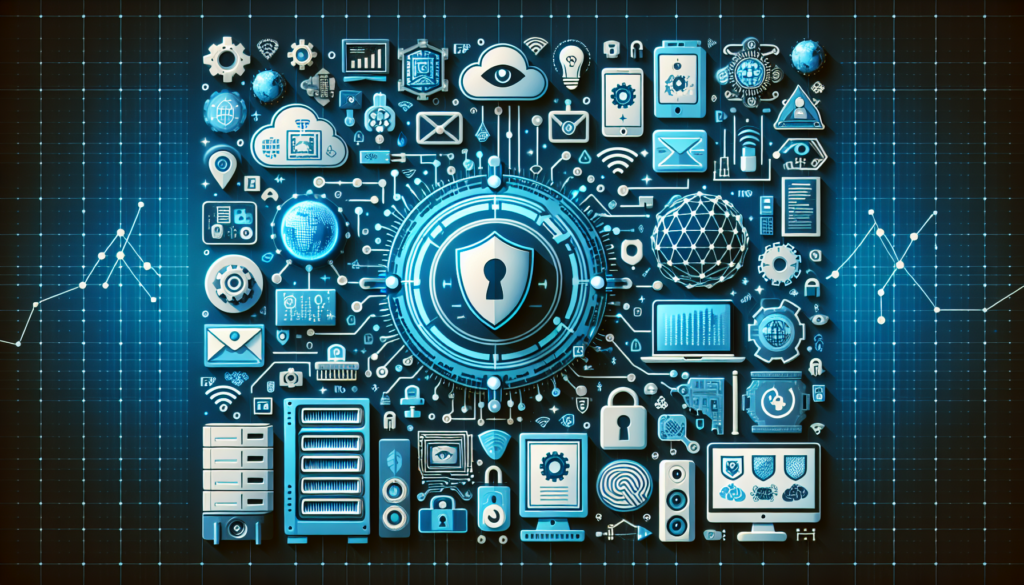In the dawn of the digital age, cybersecurity has evolved from being a mere caution to a vital component of corporate and governmental strategy. The incursion of Artificial Intelligence (AI) and the Internet of Things (IoT) has amplified both defensive capabilities and threats within the cyber environment. This article delves into the advanced technical mechanisms underlying contemporary digital security and their interactions with emerging technologies, emphasizing theories, applications, and future trends, without neglecting the reflection on case studies that strengthen our understanding of these principles applied in real scenarios.
Integration of AI in Cybersecurity Strategies
Today’s digital landscape is marked by AI systems that automate the detection and response to security incidents. AI enables predictive analysis through the processing of large volumes of data (Big Data), identifying patterns that suggest potential security breaches before they occur.
Machine Learning Algorithms, such as deep learning, are trained with terabytes of data from benign and malicious network traffic, thereby improving the accuracy in the identification of anomalous behaviors. This is done through convolutional neural networks (CNN) and recurrent neural networks (RNN), which perform detailed analysis of data over time and in sequence, respectively.
Innovations in Threat Detection Techniques
The insertion of explainable AI into cybersecurity is noteworthy, aiming to unravel the ‘why’ and ‘how’ behind the decisions made by machine learning algorithms, offering transparency and enabling the correction of errors inherent to these systems. Furthermore, graph-based intelligence constitutes a significant advancement, developing visual representations of networks that facilitate the tracking of the spread of cyber threats.
Applications of AI in Authentication and Authorization
Authentication and authorization mechanisms have also benefitted from AI. Behavioral biometrics, based on the recognition of unique patterns in user behavior (such as keystroke dynamics or mouse movement patterns), provides a personalized level of security that is difficult to replicate using fraudulent methods.
The IoT: Expanding the Cyber Territory
The IoT has turned traditionally unconnected devices into cyber entities that can be compromised. This has diversified the spectrum of attack and increased the number of threat vectors.
Security Challenges in the IoT
The fragmentation and diversity of IoT devices complicate the implementation of uniform security standards. Adapting security measures becomes difficult due to limitations in processing power and storage, as well as the heterogeneity of operating systems and execution environments present in these devices.
Security by design is postulated as a pressing need in the development of IoT devices, integrating security features from the early stages of product design, thus ensuring defensive robustness against evolving threats.
Advances in IoT Security and the Use of AI
The use of AI Autonomous Agents to manage security in IoT devices is being explored. These agents can adapt their behavior in real time, thus providing a dynamic defense that optimizes resources and effectiveness. Network segmentation and device isolation play a critical role in mitigating risks, limiting the attackers’ ability to move laterally through the network.
Case Studies: Practical Application in Strengthened Sectors
A case study of relevance is that of the banking sector, where a combination of multi-factor authentication, AI-driven behavior analysis, and constant transaction monitoring has been implemented to detect and prevent fraud. The inclusion of AI in their cyber defense systems has proven to be efficient in adapting to new attack methods, reducing the window of opportunity for cybercriminals.
In the healthcare industry, the implementation of IoT devices to monitor patients has been both a challenge and an opportunity. The virtualization of security functions and the use of containers have allowed these devices to have proper defenses without hindering their critical functionality.
Outlook: Towards a Prevented and Connected Future
Looking ahead, it is imperative to continue developing adaptive AI techniques that can anticipate unknown threats. The convergence of IoT, AI, and blockchain technologies promises a new paradigm of cybersecurity, where transactions and communications will be secure by default and auditable by nature.
Innovations on the Horizon
Federated learning, which allows decentralized and private training of AI models, emerges as an answer to the challenges of privacy and data efficiency. Moreover, post-quantum cryptography is introduced as an antidote to the risks associated with the advent of quantum computing.
In a world where every byte of information potentially tells a story, cybersecurity in the era of artificial intelligence and the Internet of Things is not just a technical discipline, but a fundamental realm that will forge the trust and stability of tomorrow’s information society.

